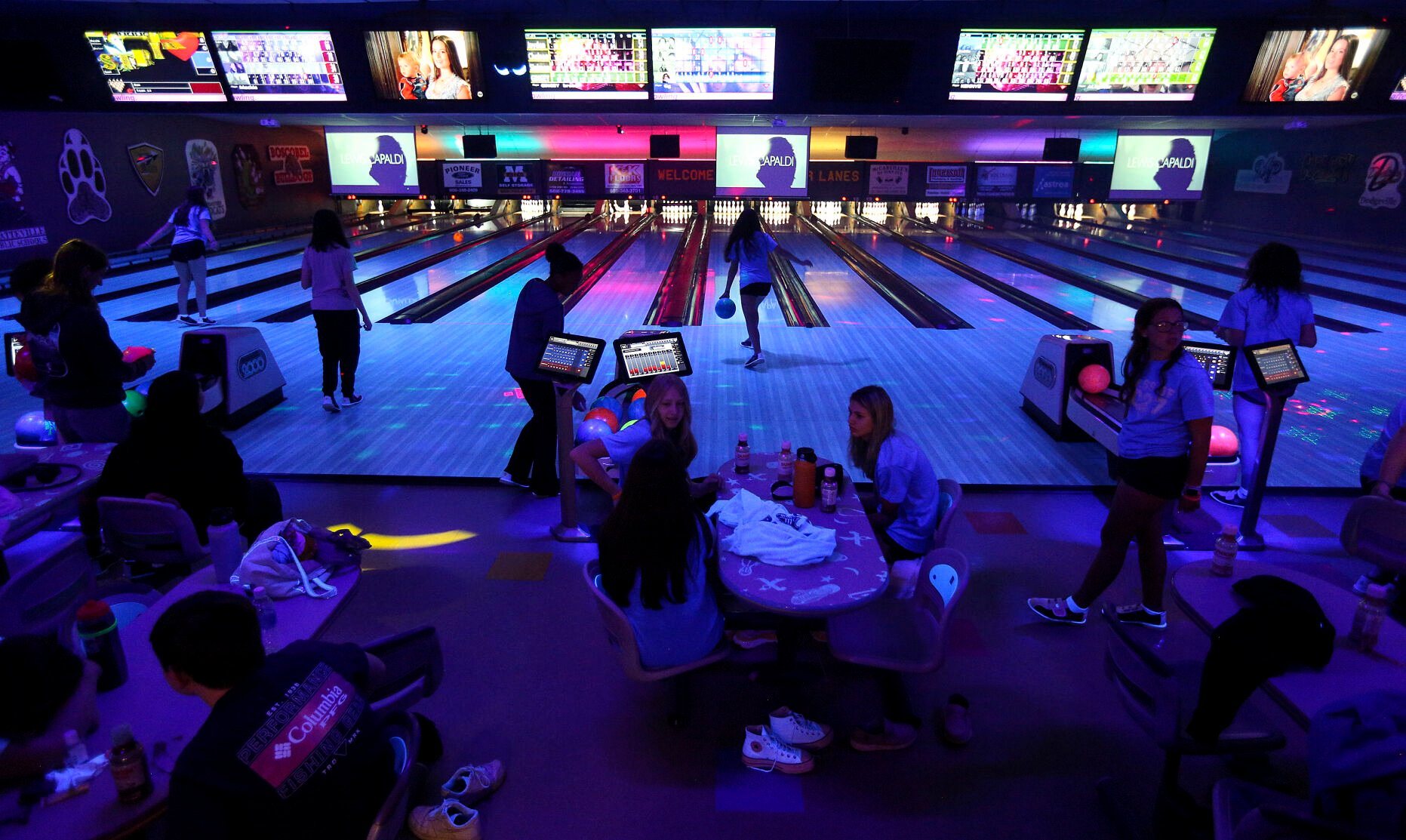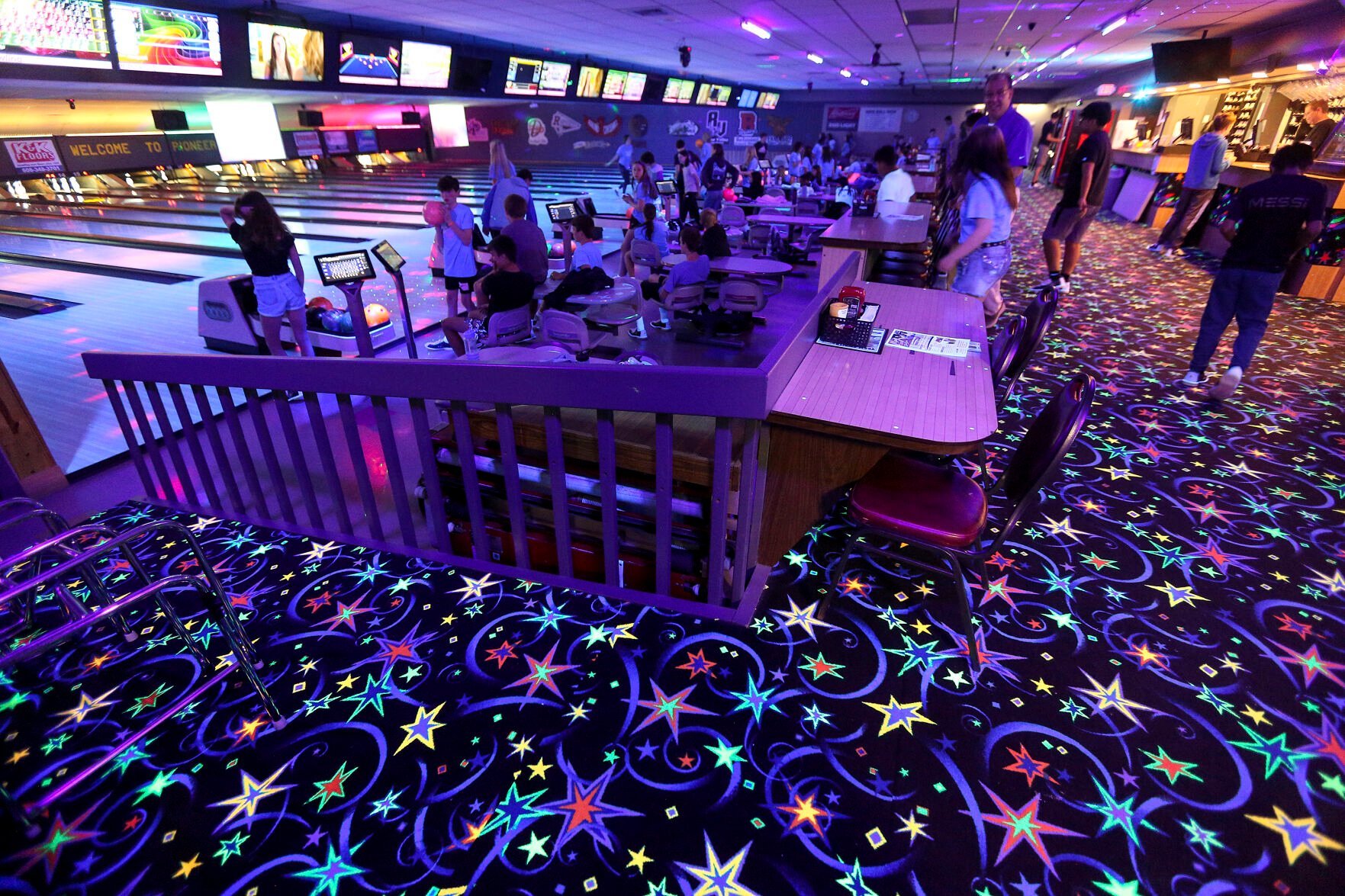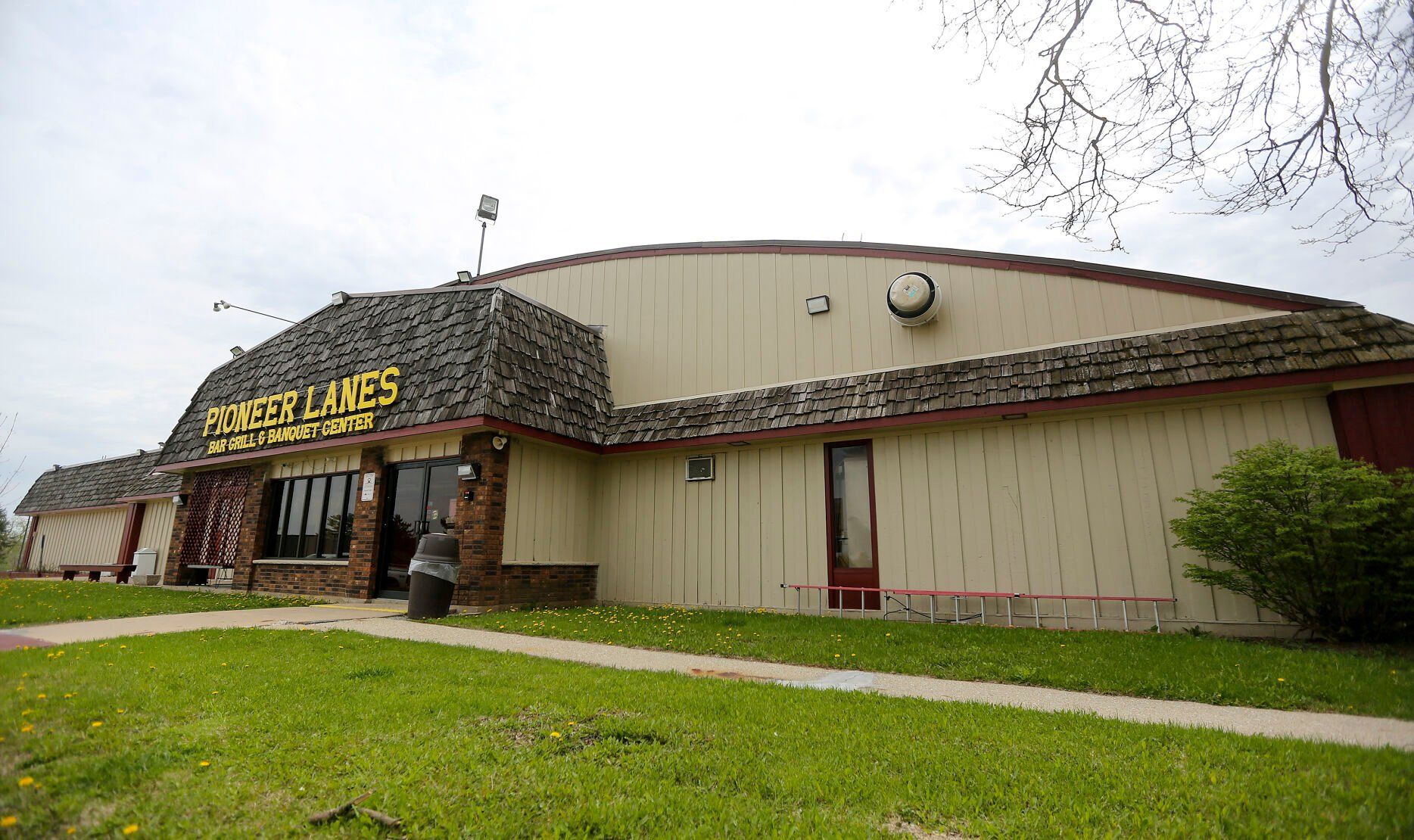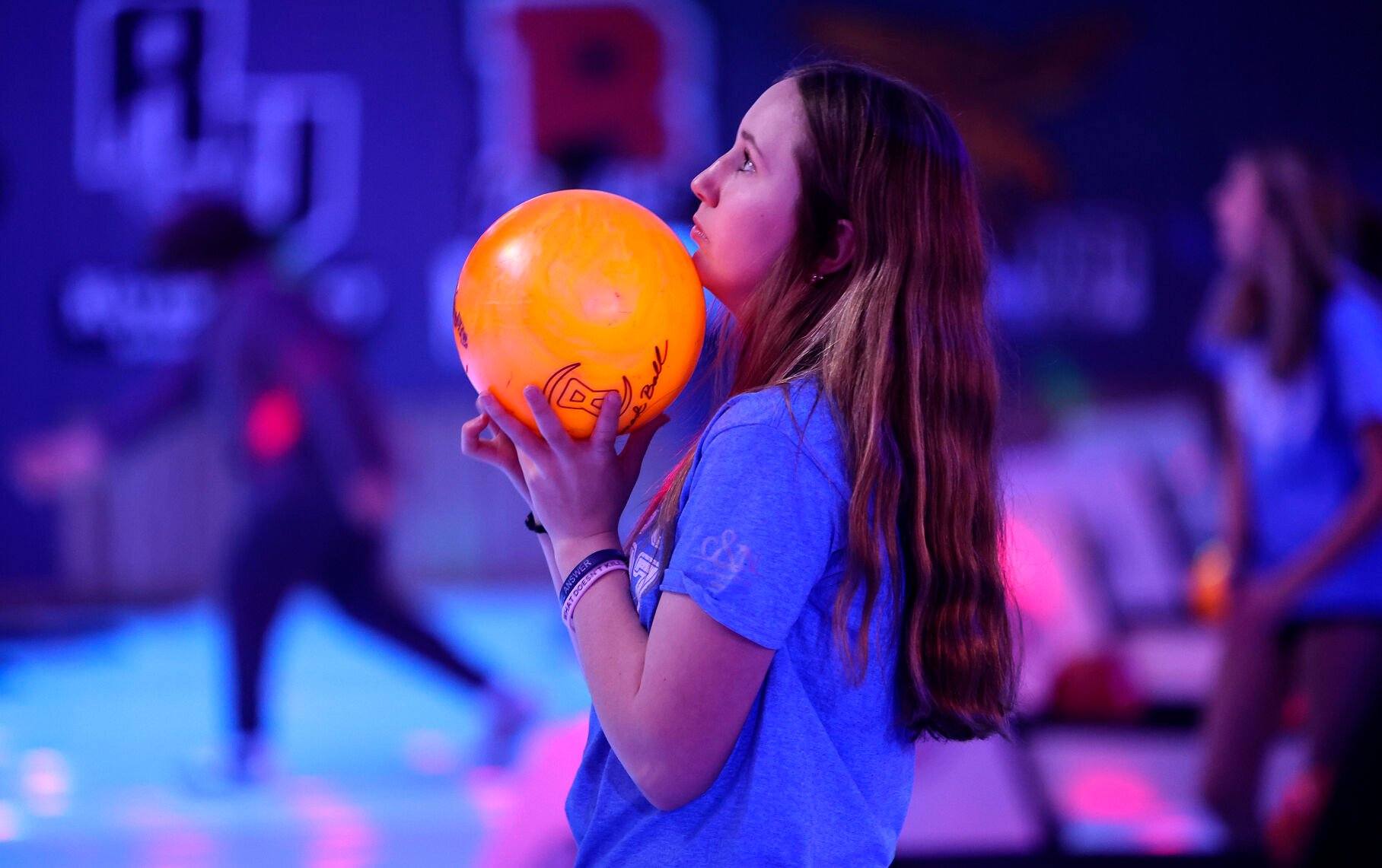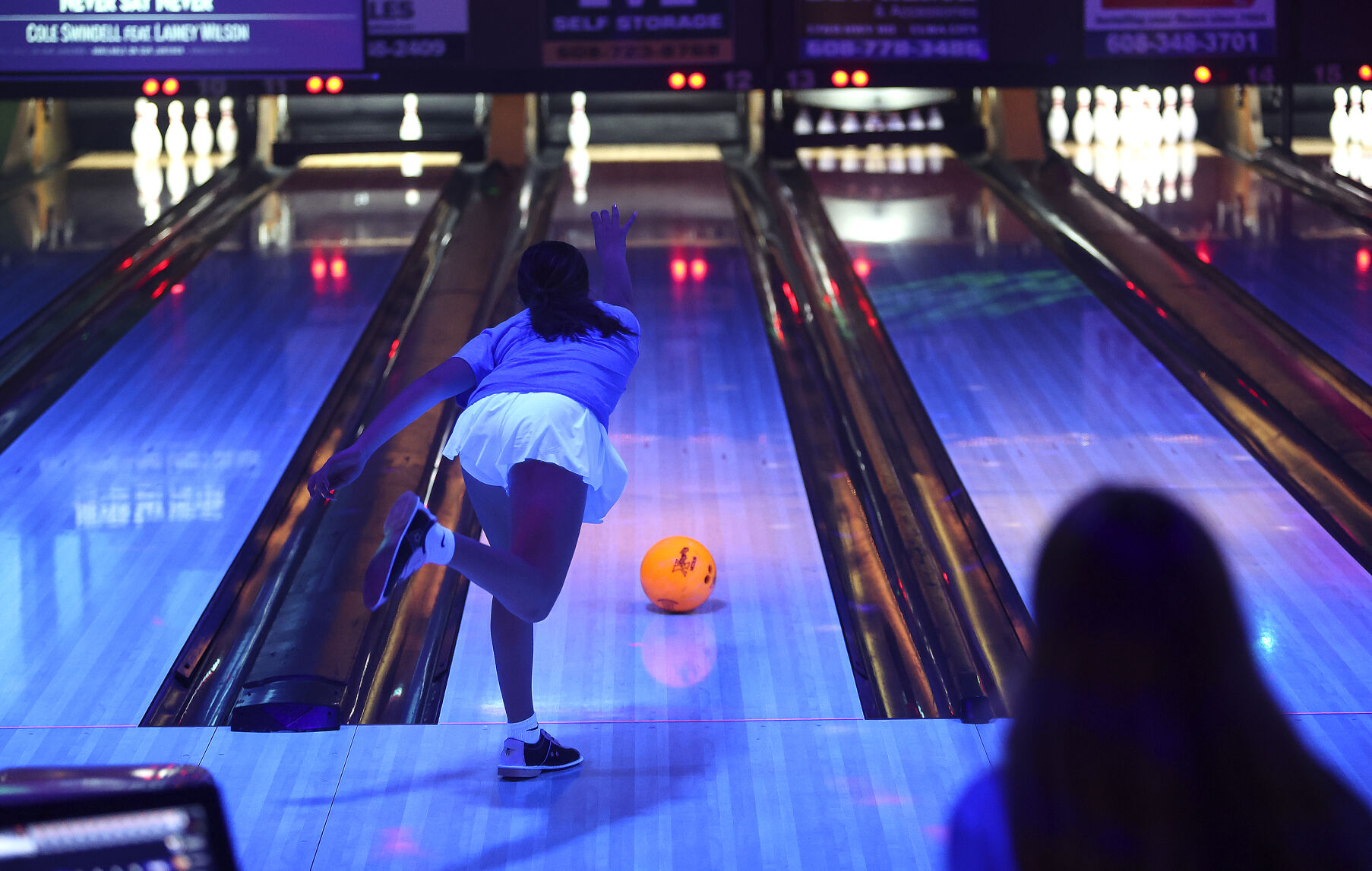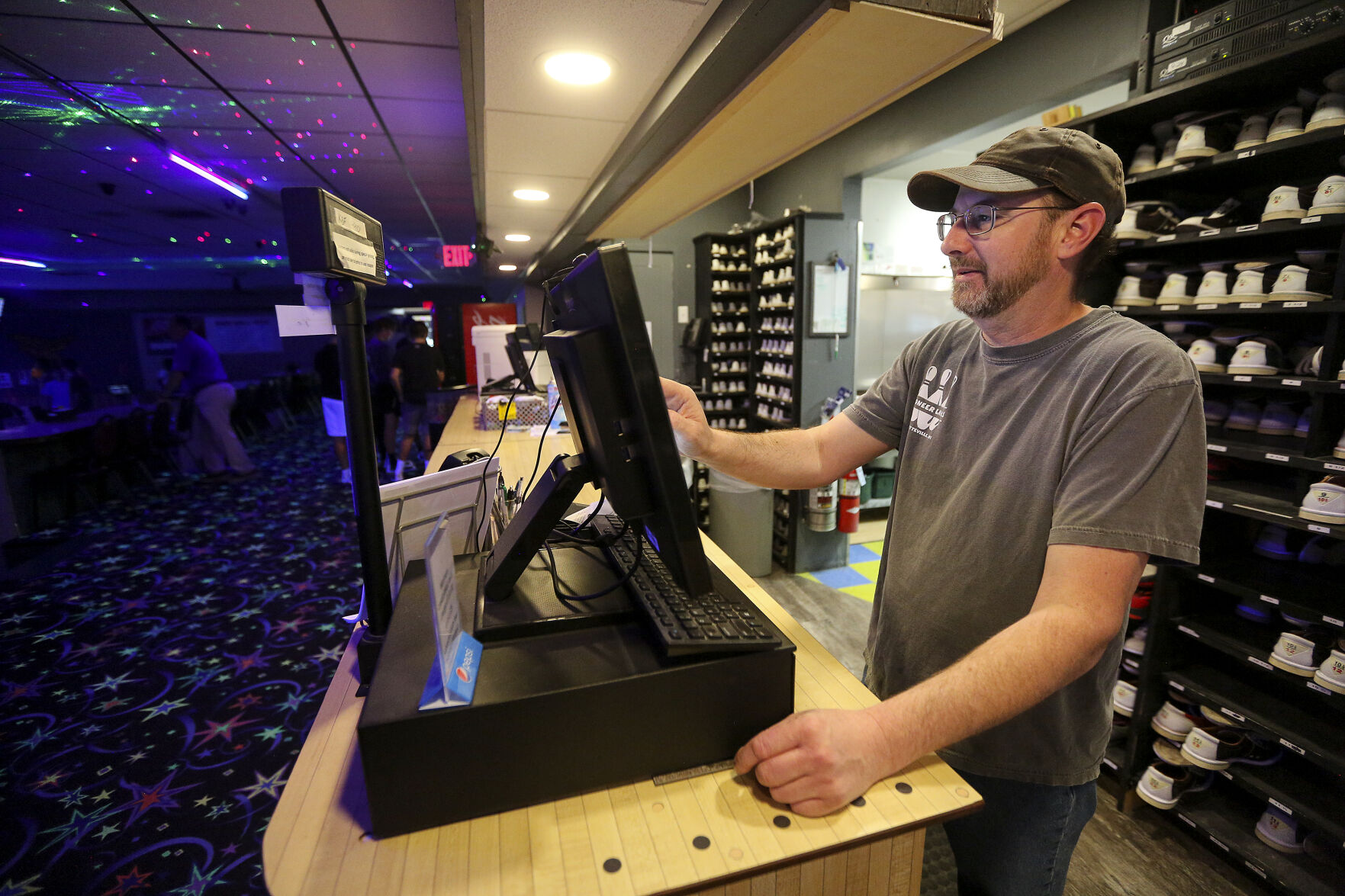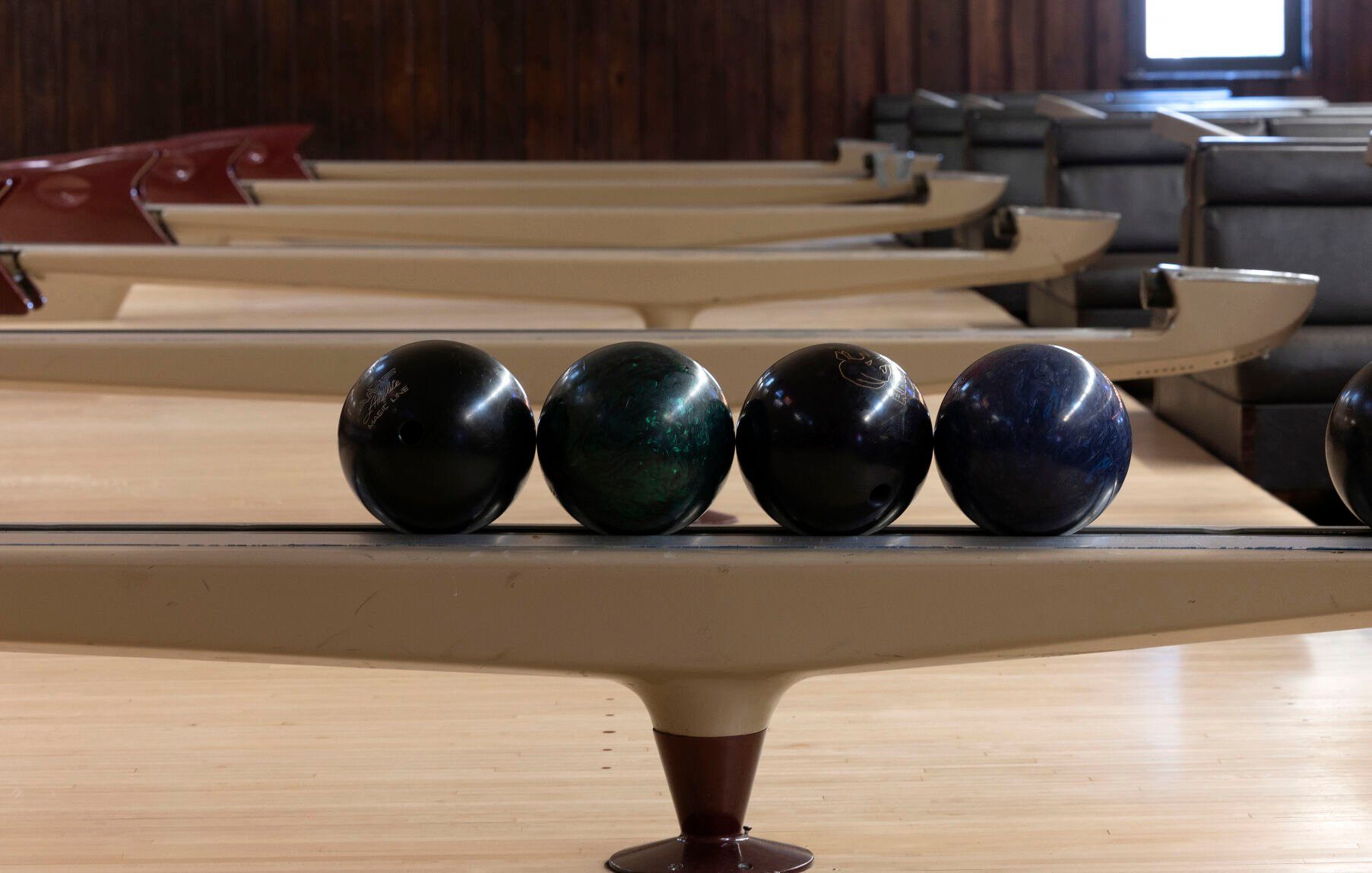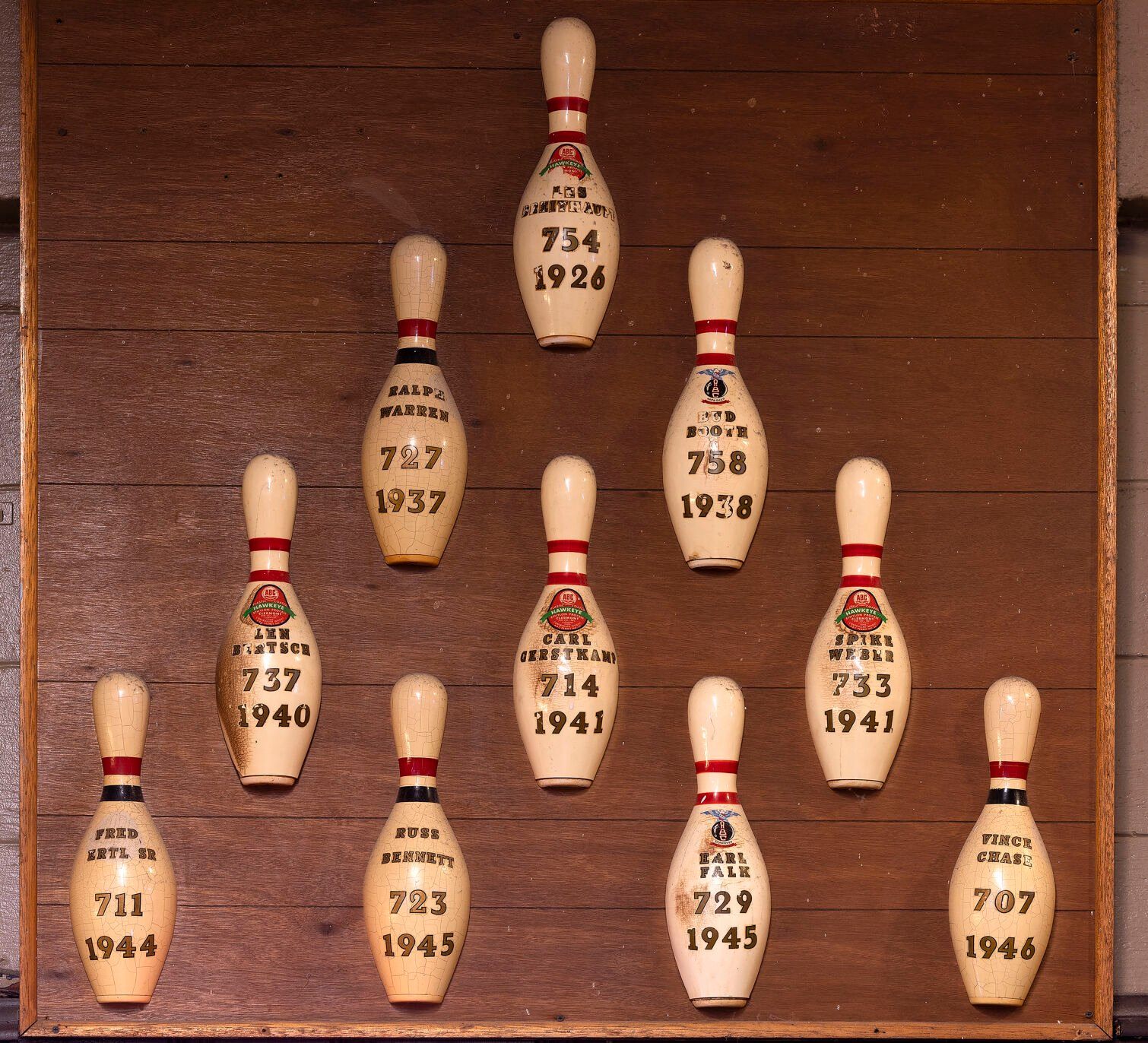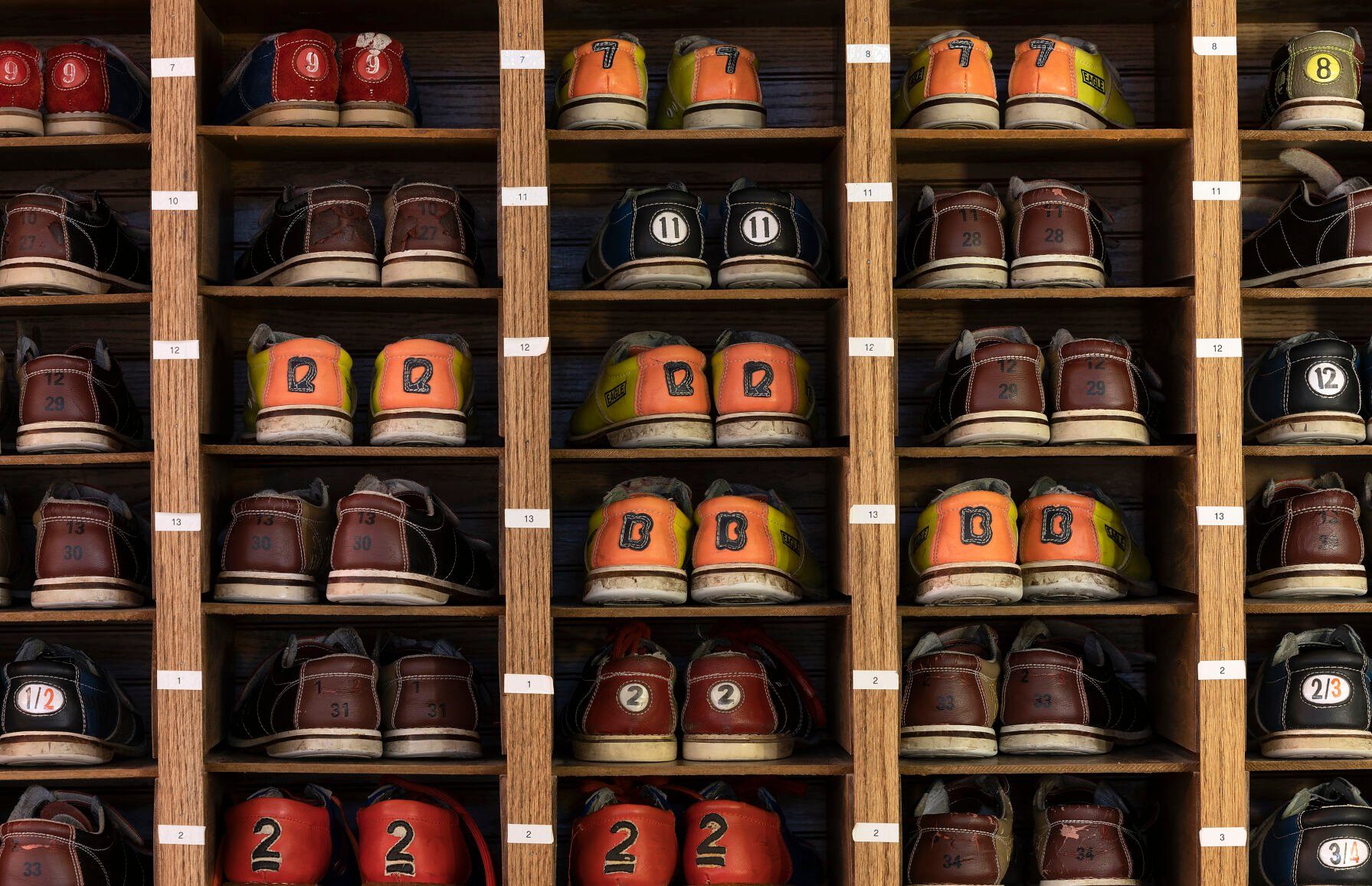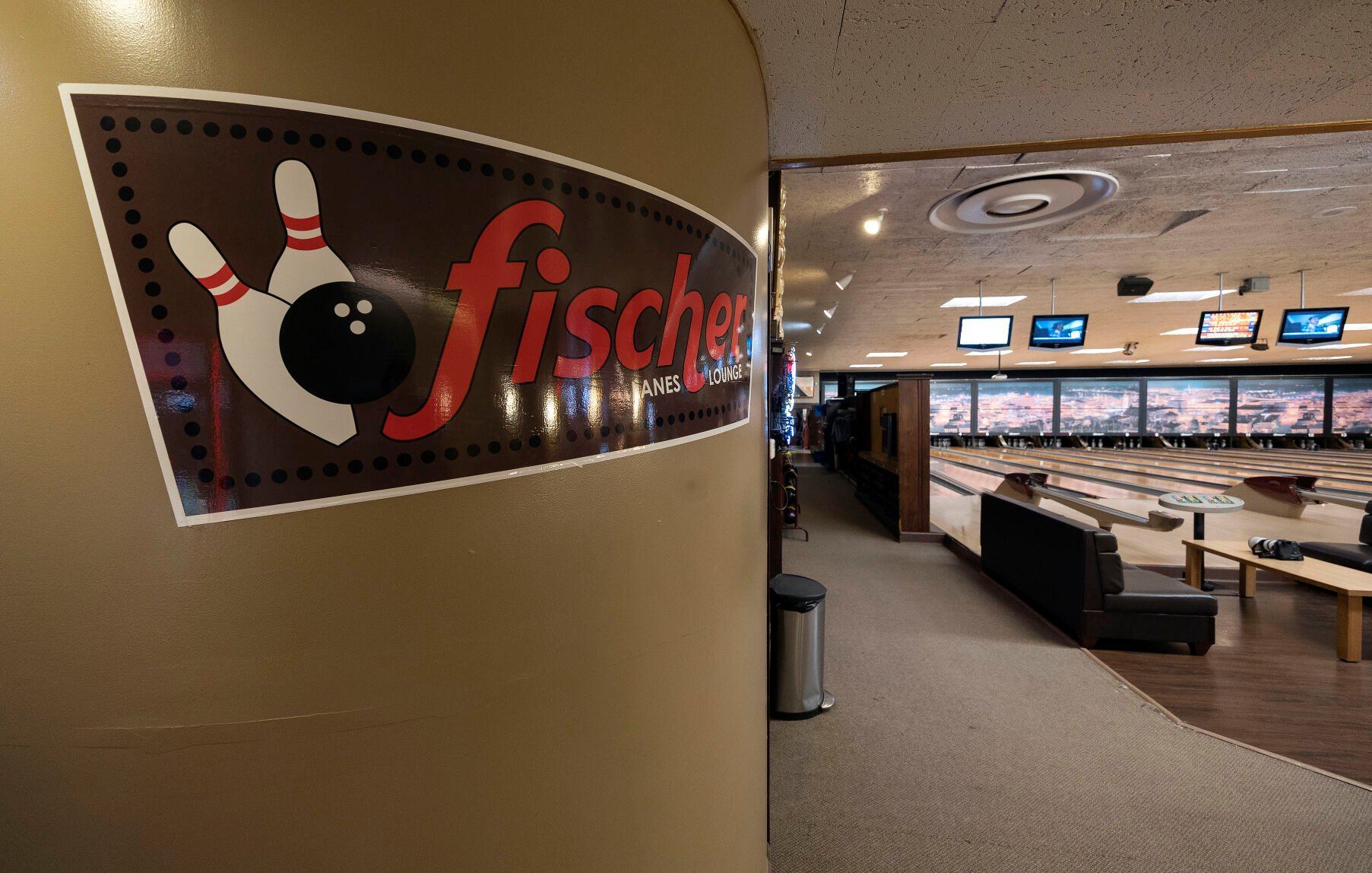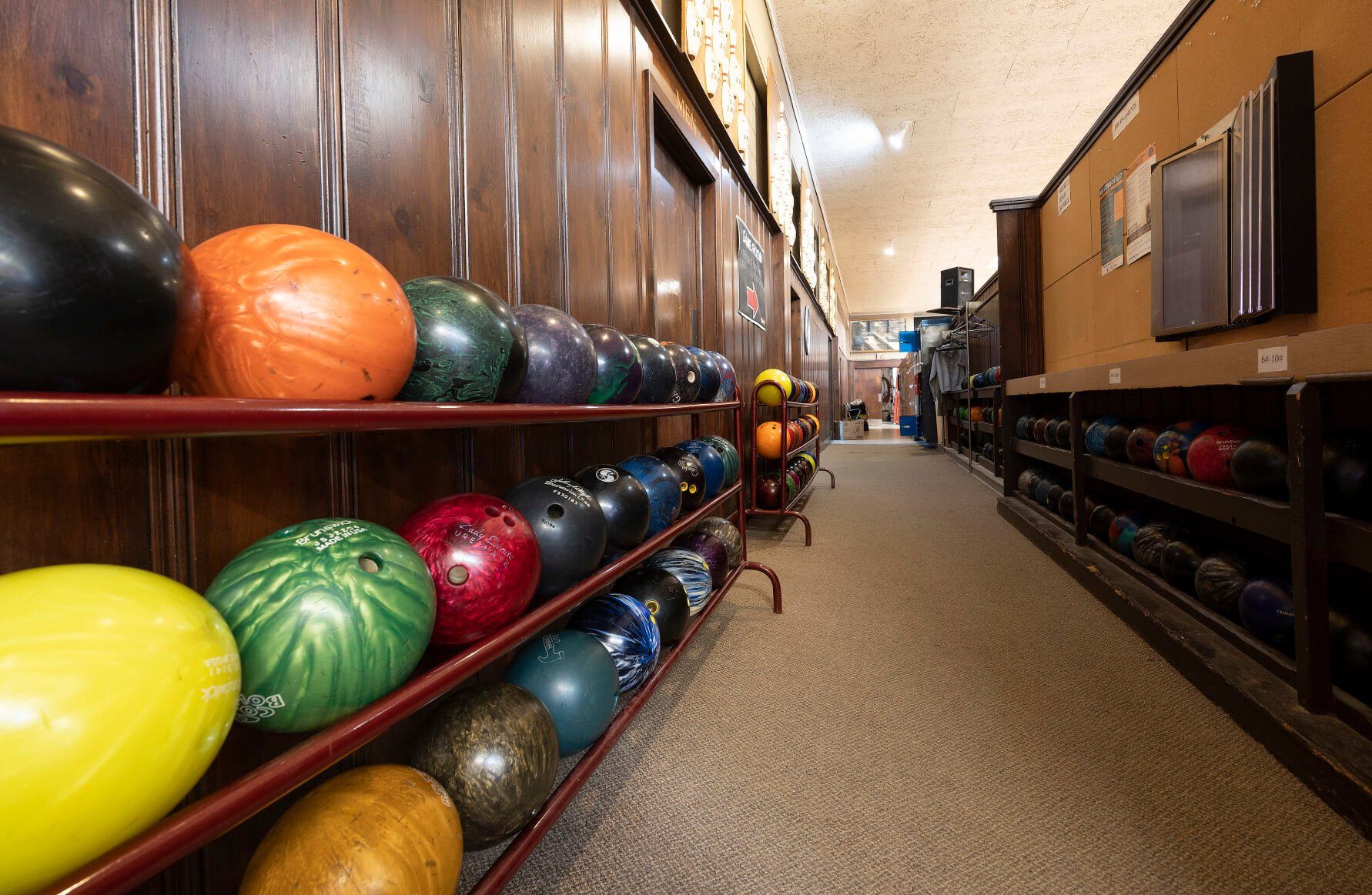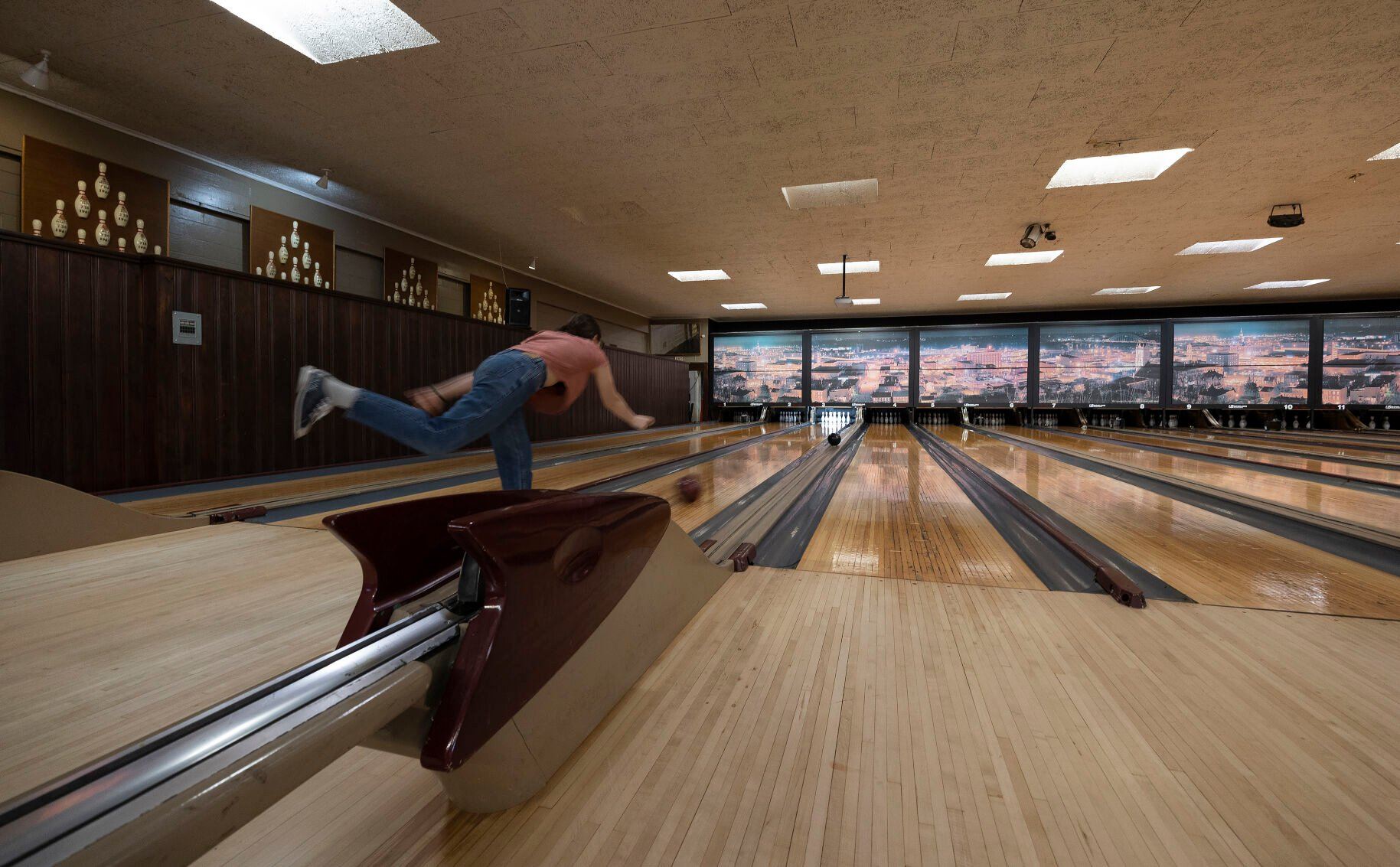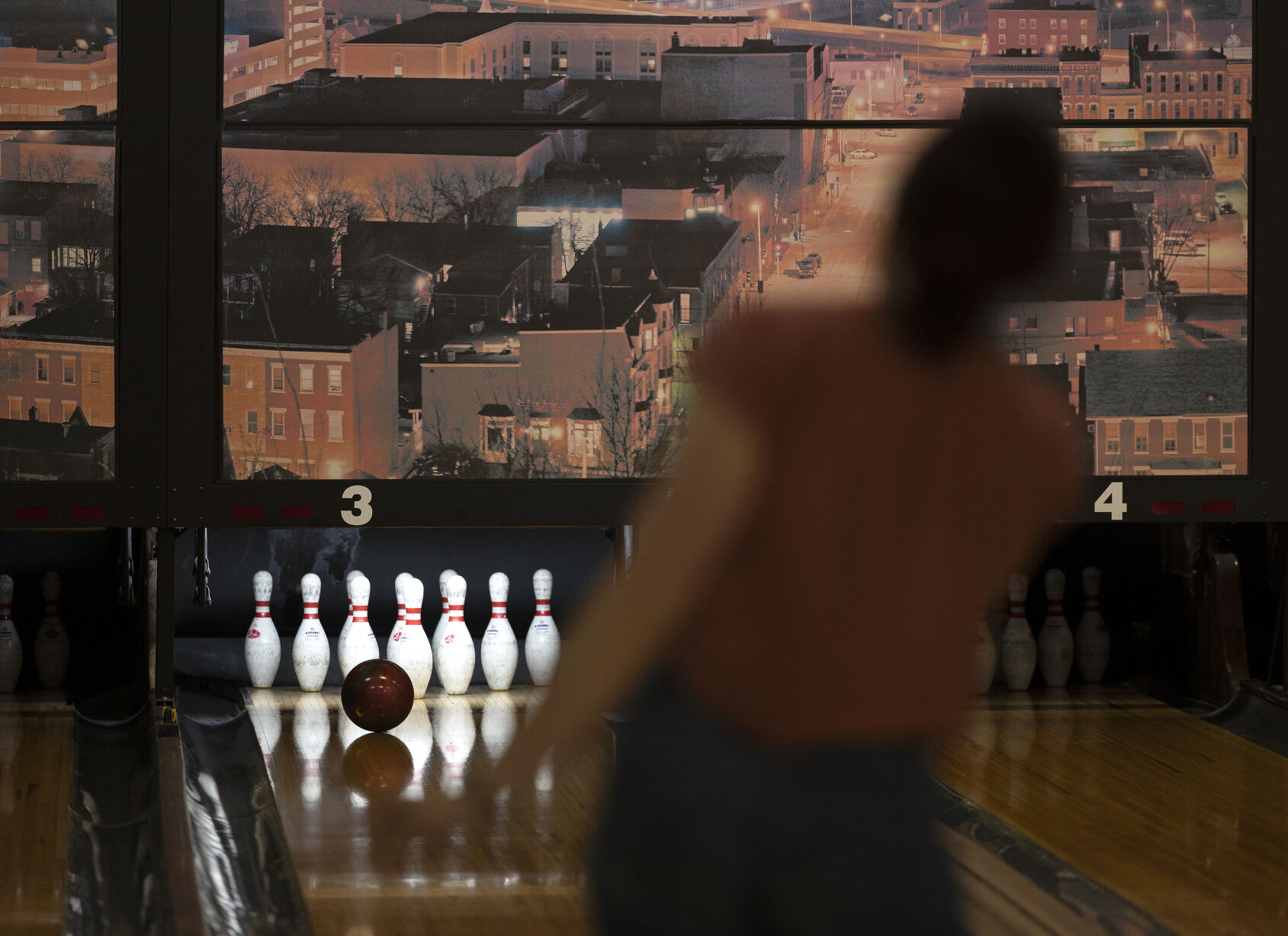When David Groves and his friends go bowling at Fischer Lanes & Lounge in Dubuque each month, their focus is more on connection than competition.
The group has bowled together regularly for the past two years. They all went to school together, and the hobby has turned into a way to stay in touch amid the increasingly hectic jumble of jobs and kids.
While they are not in an official league, Groves said the group tries to come out a couple times a month to bowl and catch up.
“Specifically with Fischer, it just feels very authentically Dubuque,” Groves said after a recent visit. “I see people coming from office jobs, construction jobs — really all over the place. So it just feels like a place where everyone is
welcome, … and it’s a fun way to keep in touch.”
While league bowling remains prevalent at area lanes, owners of longtime, locally owned bowling alleys have increased efforts to attract casual bowlers such as Groves’ group to help boost business as industry pressures strain alleys nationwide.
Owners of local bowling centers said they are increasing diversification of their offerings to offer fun for the whole family and leveraging longtime lanes’ nostalgia factor to keep people coming back.
By attracting bowlers of all ages and skill levels, local alleys hope to draw from enough wells to stay afloat.
“It takes all kinds of kinds,” Fischer Lanes manager Alex Helbing said. “League bowling is that guaranteed money every week, but we’re also here for people looking to just have a night out with friends.”
Diversifying offerings, diversifying customers
The tri-state area is home to several longtime, locally owned bowling alleys, but those that remain are only a fraction of those that have come and gone over the years.
After an unprecedented boom in the ’60s and ’70s, interest in bowling began to wane by the late 1980s. Hundreds of bowling alleys closed nationwide as participation in bowling leagues declined, including several prominent alleys in the tri-state area such as the once-popular Imperial Lanes & Lounge, which closed in 1992.
Those left behind had to find innovative ways to recruit new customers without interfering with the classic offerings that please returning regulars. For many local lanes, that has meant offering specials and making smaller changes incrementally for returning customers to hold onto the old-school feeling of older alleys.
“We don’t want to change the recipe too much,” said Jon Schroeder, owner of Sunset Lanes, which his parents founded in Dickeyville, Wis., in 1981. “It’s not like bigger centers. … I know everybody coming through the door, and I think people enjoy that personal, family-owned feeling.”
In addition to its 12 bowling lanes, Sunset Lanes also offers event space rentals and a full restaurant, which allows for multiple streams of revenue. League bowling remains popular across all age ranges, though open bowling is also important.
That diversification has become increasingly common at alleys locally and nationally as business owners look for ways to broaden customer bases and keep people coming back. Many local alleys offer food and drink, and others have added extra amenities such as arcade-style game rooms.
“Ultimately, we just want to give people something fun to do in Platteville,” said Pioneer Lanes owner Joe Haack, who decided a few years back to add an arcade to the southwest Wisconsin venue’s offerings. “We want to be a place where a family can come out and actually talk and interact and just have a good time.”
Haack said the goal is to draw bowlers of all types, crossing cultural barriers such as class or age. On any given day, he said, it wouldn’t be unusual to find a white-collar worker sitting next to a farmer at the alley’s bar.
“It seems like everybody can find their place at the bowling alley,” he said.
Leveraging nostalgia, memories
One of the biggest tools for longtime local alleys to recruit and retain new customers is leveraging their nostalgia factor. By capitalizing on the positive memories people have at the lanes over the years, alleys can keep people coming back.
They also can use that retro feeling to attract younger customers looking for a blast from the past they might otherwise only see in movies or hear about from older family members.
At Dubuque Bowling Lanes, owner Jim Ferring said he has made small changes over the years but more or less has relied on reputation and word of mouth to keep people coming back. The six-lane bowling alley has been around since 1945.
After the pandemic, Ferring eliminated open bowling and chose instead to focus on the more regular, more consistent income from parties and league bowling — two groups more likely to seek out an alley because of prior positive experiences.
“I just try to get people in on an occasional basis and then with the parties that expand the business every now and then, … it all builds up,” he said. “As far as bringing them back, I just hope the experience when they’re here is enough for them to keep it in mind and come back again.”
Helbing said Fischer Lanes also likes to keep things “old school.” The alley’s 14 lanes are made of real wood, not synthetic, and they feature above-ground ball returns not seen in many newer alleys.
One wall of the alley also is covered in old bowling pins commemorating high scores, the oldest of which dates back to 1926. The remaining walls are covered in pictures of Dubuque’s cityscape, adding to its hometown feel.
The alley also draws a decent number of customers who simply are curious about its location on the fifth floor of the building.
“There’s a lot of history here,” Helbing said. “We like to think we have some old-school vibes with new-school comfort.”


